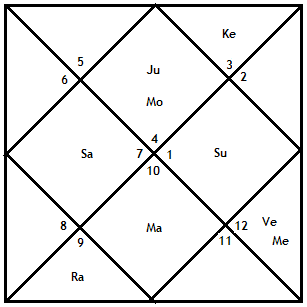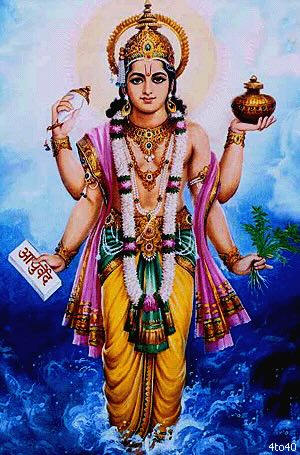Understanding the concept of Doshas and Prakriti in Ayurveda is crucial for personalized healthcare and maintaining overall well-being.
Doshas and Dominance: Ayurveda says that the three Doshas – Vata, Pitta, and Kapha – represent different energies in the body. The dominant Dosha in a person’s constitution represents their natural state of being or Prakriti. It’s the unique combination of energies that make up an individual’s physiological and psychological makeup. When we say someone is Vata, Pitta, or Kapha dominated, it means that one of these Doshas is more pronounced or predominant in their constitution. It doesn’t mean the absence of the other two Doshas; they are still present but in a less dominant state.
Characteristic Qualities: Each Dosha imparts certain characteristic qualities to an individual. For example, those with a Pitta Prakriti have qualities such as ambition, impulsive nature, and strong digestion, while those with a Kapha Prakriti exhibit qualities like stability, endurance, and calmness. Those with Vaata prakriti are more cerebral, can overthink and are creative. They have good comprehension skills and are quite adaptable in nature.
Can we use a horoscope to determine the natural prakriti and hence the primary dosha of a person? Ayurveda suggests that Prakriti is determined at the time of conception and remains consistent throughout a person’s lifetime. It is s influenced by genetic factors, and understanding one’s Prakriti can guide personalized treatment and lifestyle recommendations. This is where Astrology and Ayurveda come together. As per Astrology, it is quite straightforward to determine the prakriti based on the horoscope. The prakriti is determined mainly by the ascendant sign and the effect of planets on the ascendant. The dominant planet in the horoscope is the most important element in determining the prakriti of the person. To better illustrate, let’s first go through the nature of the planets and signs:
Planets:
1. Vaata Dosha: Mercury, Saturn and Rahu
2. Pitta Dosha: Sun, Mars and Ketu
3. Kapha: Moon, Jupiter, Venus
Signs:
1. Vaata Dosha: Gemini, Virgo, Capricorn, Aquarius, Libra
2. Pitta Dosha: Aries, Leo, Sagittarius
3. Kapha: Taurus, Cancer, Pisces
To any practitioner of astrology, this will come as a very straightforward piece of information. There is a difference of opinion on where Sagittarius & Libra belong. Some authors say that Sagittarius is pitta because it is a fiery sign. Similarly Libra is an air sign and hence should be in the vaata dosha category. However, other authors give more emphasis to planets and hence because Jupiter is a kapha planet hence Sagittarius sign belongs to kapha category. These results can be modified and an astrologer should carefully study the person also.
Why is it important to determine prakriti?
Understanding an individual’s Prakriti helps in tailoring health recommendations, including diet, lifestyle, and therapeutic interventions, to maintain balance and prevent disease. It also aids in recognizing early signs of imbalance and addressing them effectively. This personalized approach is one of the distinctive features of Ayurveda and can contribute significantly to holistic healthcare.
Can we use a horoscope to determine the natural prakriti of a person?

Yes, we can certainly determine the natural prakriti of a person from his/her horoscope. We need to look at the dominant planet in the horoscope. How do we do that? We look at the Ascendant and the Ascendant lord. We look at planets located in the ascendant and those planets that have a drishti on the ascendant. If there are multiple planets involved, then the primary and secondary dosha types come into the picture. The strength of planets comes into the picture. A strong planet in exaltation aspecting the ascendant or a planet forming one of the pancha-mahapurusha yoga is an example of a strong planet that can sway the entire chart its way. Do not just look at the planets in the ascendant. Look at the ascendant lord and its disposition also and if any other planet has a close yoga with it.
Now, can you look at the chart here and find out what would be the dosha type of this horoscope? It’s a very famous horoscope. Let’s see how many can figure it out…
Diseases as an imbalance of dosha
Ayurveda talks about diseases as the imbalance of doshas. Therefore, these imbalances should be seen from the horoscope as well. Diseases happen when the doshas get imbalanced, i.e., become more or less as against the natural prakriti of the person. Let’s first revisit how to predict diseases. The main rules are:
1. The houses of disease are the 6th, 8th and 12th. The 6th is the house of disease. The 8th house denotes long-term disease and the 12th house is the house of hospitalization.
2. Natural benefics in kendras and natural malefics in the 3rd and the 6th house give boost to the immunity of the person.
3. Benefics in the 6th, 8th, and 12th houses and malefics in good houses give rise to diseases
4. The lords of the 6th, 8th and 11th houses are disease causing planets.
5. We need to look at the sign occupying the 6th and 8th houses and the malefic effect on these houses.
We then need to look at the dasha system and find out which mahadasha, antardasha are in effect at a given time. Let us say Sun dasha is in progress. Since the Sun is a natural malefic, it can cause pitta imbalance. The body part impacted should be ascertained by the bhava and the sign impacted by the Sun. Similarly, Saturn in a similar position can cause vaata imbalance. If these planets become a lord of disease-causing houses, then their impact increases multifold. While Jupiter is a benefic planet, it can cause problems of excesses. As a 6th lord, Jupiter can really cause kapha imbalance, which is a leading cause of obesity, diabetes, laziness etc. Some of these are long-term diseases, e.g., the onset of anxiety, diabetes, and indigestion can be long-term problems. It is necessary to look at older dashas also to predict these long-term problems.
Towards cure and balance

ॐ नमामि धन्वन्तरि आदिदेवं सुरासुरैर्वन्दित पादपध्मम्।
लोके जरारुक् भयमृत्युनाशनं धातारमीशम् विविधौषधीनां॥
The balanced state of a person is the prakriti denoted by the horoscope. The imbalance of dosha is the disease-causing planet. In order to cure, we need to bring the balance back. Ayurveda strives to do exactly that. Through specific ayurvedic medicines, lifestyle changes and dietary regulations, balance is brought back. Astrology is a good tool to understand the initial balanced state and the cause of imbalance. Lord Dhanvantari is worshipped to bring this balance back.
Contact Information | Need Help? | Frequently Asked Questions | Astrology Glossary | Sitemap | RSS Feeds
© Copyright 2014-2022, Abhilasha and Kshitij Sharma. All right reserved. Terms of Use.
No comments yet. You should be kind and add one!
Please follow this link for Contact and Consultation.
Before submitting a comment on VEDIC ASTROLOGY, please understand that discussions/messages on the forum and on the blog are visible to the visitors of the site as public information and you allow the site to use the comment appropriately in the articles and notes. Inappropriate and irrelevant comments will be removed at an admin’s discretion. Your email is used for verification purposes only, it will never be shared. Please go through the Terms of Use in the footer of the page.